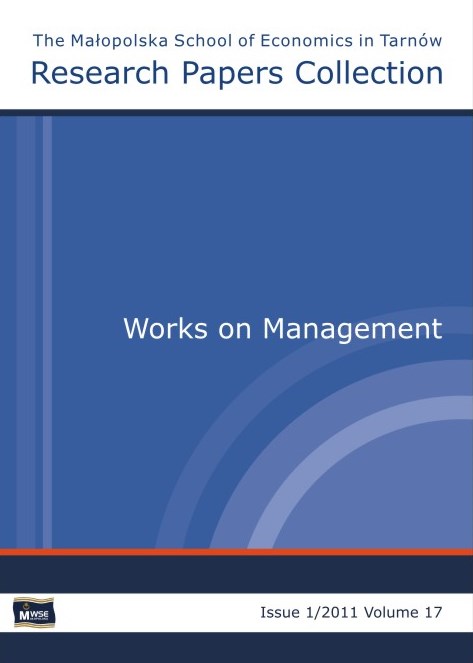Abstract
Along with development of the information society and spreading of computer technology, more and more areas of life of individuals are related to the access to IT services. Execution of daily needs of a modern citizen requires ever increasing use of advanced technical means, such as rich web applications, mobile devices, multimedia services, etc. Many of these activities go along with the need of their individual and autonomous execution, which results from the world of technology entering into highly private areas of life, such as correspondence, social relationships or personal finances. Autonomy of participation in such activities is nowadays more and more dependent on the ability of autonomous operation of computer equipment and the services offered with it. Due to the civilisation changes that come along with introduction of IT technology in the communities, the term “performance” gains a new meaning and refers not only to the capacity of executing physical activities but also to participation in the information-related area of life. The loss of performance may cut a person off from access to this area, even if the lost capacities are not in themselves necessary for pursuit of similar objectives of the individual. It happens when technology that helps satisfy specific needs does not leave an alternative way of communication of a human being with a machine or does not present the potential of adaptation to specific conditions and limitations to which the user is subjected. Overcoming digital discrimination of the disabled requires application of techniques of artificial intelligence which imitate the redundant and creative human behaviour. In the example of artificial neural networks, analogies between methodological errors made during teaching and assessment of their operation and the problems of barriers of human–computer interfaces accessibility may be noticed.
References
Hartson H.R. 1998. “Human-computer interaction: Interdisciplinary roots and trends”. The Journal of Systems and Software, no. 43, pp. 103–118. Elsevier Science.
View in Google Scholar
Jacko J.A., Sears A. (eds.). 2002. The human-computer interaction handbook: Fundamentals, evolving technologies, and emerging applications. New York: Lawrence Erlbaum Associates.
View in Google Scholar
Kirenko J. 1995. Niektóre uwarunkowania psychospołecznego funkcjonowania osób z uszkodzeniem rdzenia kręgowego. Lublin: Wydawnictwo Uniwersytetu Marii Curie-Skłodowskiej. ISBN 83-227-0734-7.
View in Google Scholar
Lupton D., Seymour W. 2000. “Technology, selfhood and physical disability”. Social Science and Medicine, no. 50, pp. 1851–1862. Elsevier Science.
View in Google Scholar
Przybyło J., Jabłoński M., Wołoszyn P. 2003. “Wizyjny interfejs człowiek-komputer przeznaczony dla użytkowników niepełnosprawnych”. Automatyka, vol. 7, no. 3, pp. 385–398. Kraków: Uczelniane Wydawnictwa Naukowo-Dydaktyczne Akademii Górniczo-Hutniczej.
View in Google Scholar
Wołoszyn P. 2009. “Interfejs dla osób niepełnosprawnych”. In: Podstawy inżynierii biomedycznej. Ed. P. Augustyniak, R. Tadeusiewicz. Kraków: Wydawnictwo Akademii Górniczo-Hutniczej.
View in Google Scholar
Wołoszyn P., Przybyło J., Jabłoński M. 2003. “Analiza przydatności metod komunikacji z komputerem w tworzeniu interfejsu dla osób niepełnosprawnych”. Automatyka, vol. 7, no. 3, pp. 399–408. Kraków: Uczelniane Wydawnictwa Naukowo-Dydaktyczne Akademii Górniczo-Hutniczej.
View in Google Scholar
Wołoszyn P., Tadeusiewicz R. 2003. “Analiza ruchów praksyjnych jako nowe narzędzie przydatne w tworzeniu graficznego interfejsu użytkownika”. Informatyka Teoretyczna i Stosowana, vol. 3, no. 5, pp. 115–138. Częstochowa: Wydawnictwa Politechniki Częstochowskiej.
View in Google Scholar
World Health Organization. 2002. Towards a common language for functioning, disability and health. Geneva.
View in Google Scholar
© Copyright by Małopolska School of Economics in Tarnów. The articles are available under the Creative Commons Attribution NonCommercial-NoDerivatives 4.0 International License


